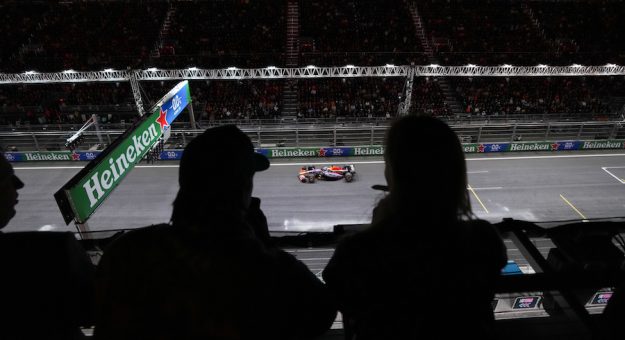HARRISBURG, N.C. — With apologies to longtime SPEED SPORT colleague Dan Knutson, I’m finished with Formula 1.
The end came on Jan. 31 when those making the final decision rejected team owner Michael Andretti’s bid to join the Formula 1 grid with a two-car effort. After clearing numerous hurdles and gaining support from the FIA, those with the real power ultimately stood up and said no to an American team (Andretti Global) with an American engine (GM-Cadillac) and at least one American driver.
As part of a lengthy statement detailing its decision, Formula One Management noted, “Our assessment process has established that the presence of an 11th team would not, in and of itself, provide value for the Championship.”
To me, this decision means FOM officials also said no to American race fans, to American corporations and, more importantly, to racing legend Mario Andretti, who has been an outstanding ambassador for Formula 1 since winning the 1978 world driving championship.
In return, it’s time for Americans to say no to Formula 1.
Don’t watch the ESPN broadcasts, don’t do business with companies that sponsor the series and stay away from Formula 1’s various social media channels. And, most of all, don’t buy tickets to any of the three American races on the Formula 1 schedule.
Since Formula One Management doesn’t see any value in an American Formula 1 effort carrying the Andretti and GM brands, let’s show them we don’t see any value in watching or supporting their follow-the-leader races.
Formula One Management left the door slightly ajar, indicating an 11th team could be added in 2028, but all that does is kick the can a little farther down the road.
This writer was 7 years old when Dan Gurney won the 1967 Belgian Grand Prix.
It’s the last time an American driver won an F-1 race in an American-built car (Eagle) powered by an American engine (Weslake). I’ve been waiting since Lyndon B. Johnson was president for someone new to assume that mantle, and Michael Andretti’s effort gave me hope.
The FOM decision makers dashed that hope.
■ It would be interesting to know how much money was spent simply on diesel and jet fuel to transport everything and everyone that’s part of the NASCAR Cup Series circus from North Carolina to Los Angeles and back for the third running of the Busch Light Clash at The Coliseum.
Long before an approaching atmospheric river shuffled the schedule, this event had become a storybook case of going to the well one too many times. Business at the box office confirmed that NASCAR’s 2023 visit to the iconic sports stadium should have been its last.
Now, we’re anxiously waiting to hear how and where NASCAR plans to kick off the 2025 season.
■ Thirty years ago, tragedy cast a pall over Speedweeks at Daytona Int’l Speedway as a pair of NASCAR Cup Series drivers died in separate crashes during practice leading up to the 36th running of the Daytona 500 on Feb. 20, 1994.
The initial accident, which took place during the first Cup Series practice session on Feb. 11, claimed the life of nice guy, TV personality and 18-time Cup Series race winner Neil Bonnett. He was 47 years old.
Bonnett was slowly returning to racing after suffering a head injury in a 1990 crash at Darlington Raceway. He had a five-race deal to drive the No. 51 Country Time Lemonade Chevrolet owned by James Finch during the 1994 season.
Coming off turn four at speed, Bonnett’s pink-and-yellow Chevy spun out of control and slammed the outside wall nearly head-on.
Tragedy struck again on Feb. 14 when 1993 Goody’s Dash Series champion Rodney Orr was killed during a NASCAR Cup Series practice session prior to second-round qualifying.
The 31-year-old driver from Robbinsville, N.C., was making a mock qualifying run when he lost control entering turn two. His Ford Thunderbird lifted up and slammed into the outside wall and catch fence with its roof.
Although never confirmed by NASCAR, suspension failure resulting from the use of extremely soft shocks and springs is often cited as a factor in both crashes.
Tires were also a common link and caused a great deal of trepidation in the garage area as Bonnett and Orr were both using Hoosier’s new radial stock car tires. Even though the Hoosier tires were never connected to either wreck, all 42 cars that started the 1994 Daytona 500 were on Goodyear tires.
